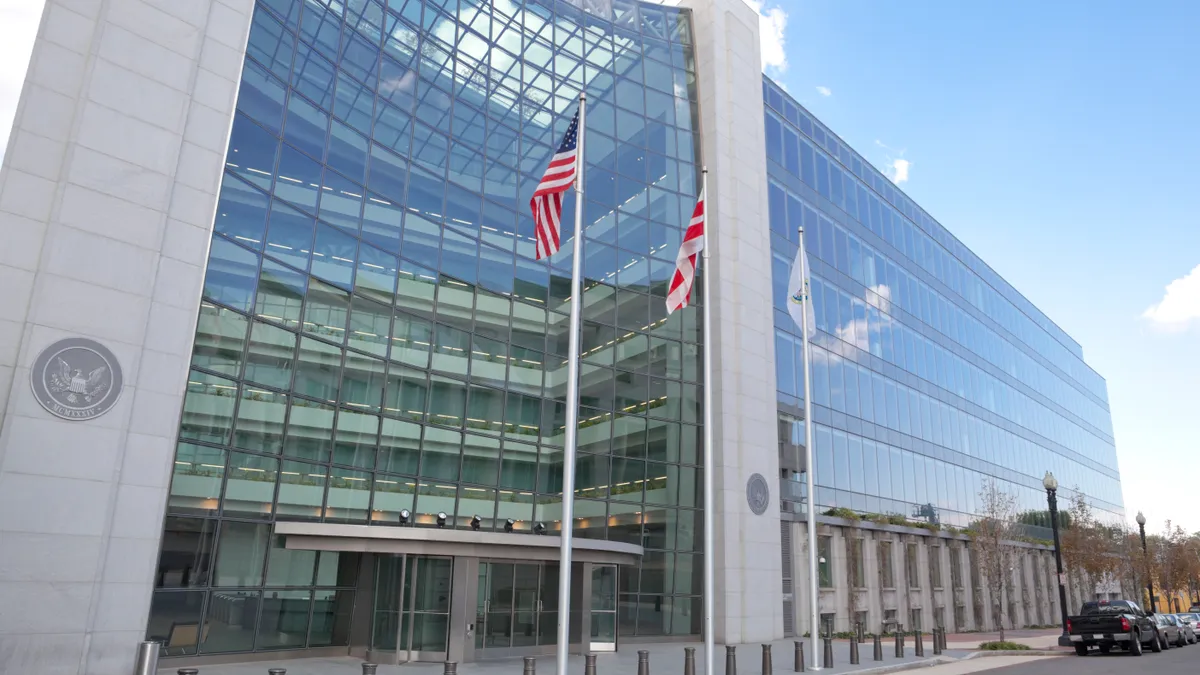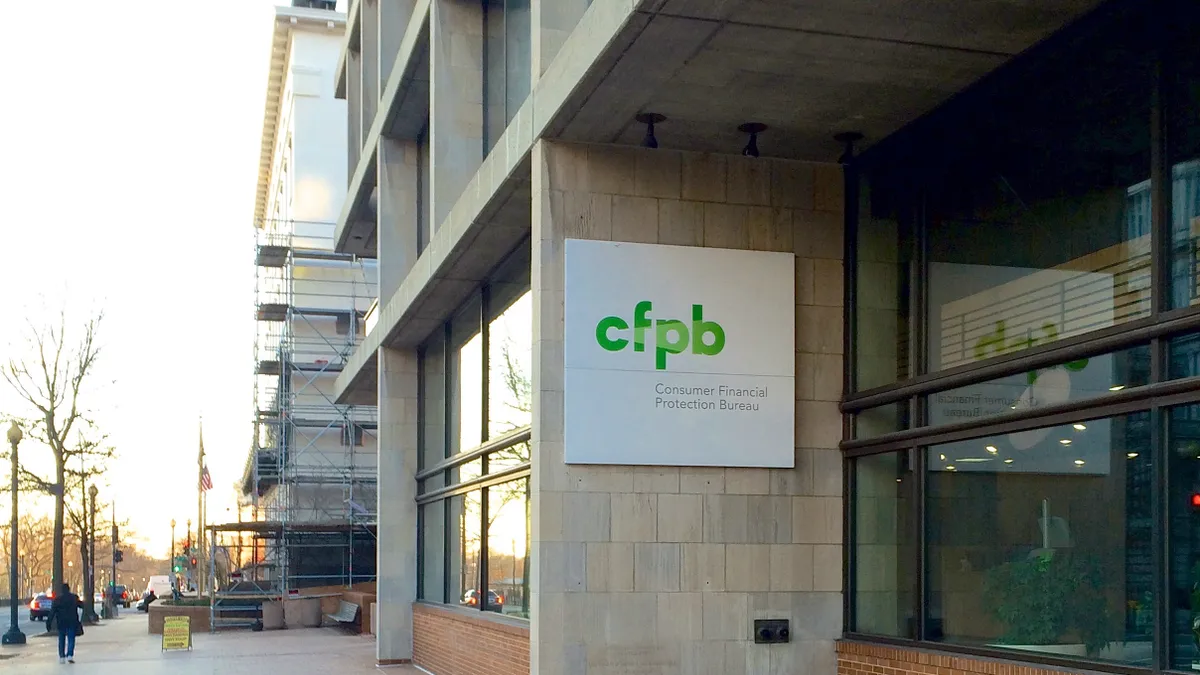General counsel can expect higher liability risk if their company is planning a merger with a special purpose acquisition company (SPAC) if proposed rules by the Securities and Exchange Commission (SEC) are finalized as written.
Among the changes, there are two that could hit target companies hard.
The first is requiring the operating company, and not just the SPAC, to file the S-4 registration form with the SEC, which would make the company as liable as the merger partner for any false or misleading information that’s included in it. The second would do away with the safe harbor for forward-looking statements that regular mergers enjoy, which would put SPAC deals on par with traditional IPOs, where projections must be left out of any documents that investors would use to decide whether to buy shares in the company.
The SEC’s proposed changes are not unreasonable, but they would cast a pall over a market that, since the beginning of this year, has seen a steep decline in investor interest after two years of stunning growth.
“Saying the target now has to be a registrant, too, and file that same document as the SPAC makes logical sense,” Lowenstein Sandler Partner Jared Kelly said in an interview. “Probably more than half the information that’s in the S-4 comes from the target company anyway, and the target company is the one that survives as a public company.”
Falling star
SPAC mergers have been the hottest thing on Wall Street since 2020 because they offer startups a way to go public by merging with, and assuming the status of, a publicly traded blank-check company whose goal is to find a promising company with which to merge.
For the last year or so, the SEC has been seeking to cool the market out of a concern the combined companies could lead to big losses if investors, hoping to capitalize on the SPAC surge, rush into them without getting a complete picture of their prospects.
By and large, the agency has been successful. The rate of SPAC IPO issuance has slowed, according to SPACInsider, with just 53 transactions by the end of March at an average size of $185 million compared with 613 transactions last year at an average size of $265 million.
Part of the drop stems from increased scrutiny by the SEC but, probably more importantly, the performance of companies following SPAC IPOs has been well below that of companies that took the traditional IPO route, and the market has taken note.
For general counsel of a company that sees itself as a prime target for a SPAC merger, the proposal to take away safe harbor protections for forward-looking statements amounts to a warning sign because the ability to make financial projections has been one of the attractions of a SPAC merger.
Arguably, the safe harbor, which stems from the Private Securities Litigation Reform Act of 1995, enables companies to go public earlier in their life cycle because of the relative freedom it gives them to go out on a limb and project their market performance two, three or even five years out. For investors trying to decide whether to invest in an unproven startup, these projections can be a big part of their decision.
“Targets at an earlier stage could say, ‘Well, we don’t have all the revenue that you would typically need, or we’re not in that flashy sector, where we could do a regular IPO, but we think we have this opportunity and based on our projections, we think we’ll have x amount of revenue and profit in the next five years,’” said Kelly. “So, you could include that and then you can price the deal based on these projections.”
If that goes away, companies hoping to merge with a SPAC will have to balance the need to attract investors with the increased risk they face of getting sued by shareholders if their projections don’t pan out.
“It doesn’t mean you’re definitely going to be found liable,” he said. “If you did it the right way, and you made these assumptions in good faith, and based on all the best information and you properly characterize what could go wrong, then you still probably avoid liability. However, you just won’t have a safe harbor.”
The absence of that safe harbor could serve as an invitation to critics to see how far they can go to test the company’s assumptions.
“I think the first practical effect of this is, you’ll have a lot more plaintiffs’ attorneys bringing actions to see where the line is or to get a settlement or something,” Kelly said. “Because before, it’s a safe harbor, and [a lawsuit] is probably going to be tossed out at summary judgment stage or even prior, where plaintiffs’ attorneys won’t bring the action because they know they don’t really have a shot. But without the safe harbor, it becomes a little bit more fair game, like, ‘Let’s see what a judge thinks, and defend yourself to us.’ The burden of proof shifts to the issuer of the securities instead of the plaintiff bringing the action.”
Windows of liability
In general, there are two windows of liability that would open up if the safe harbor goes away. The first is when the proposed merger goes before the SPAC shareholders for a proxy vote to approve the deal, and the second is after the merger – the so-called de-SPAC transaction – closes and the securities for the combined company are made available to investors.
Without the safe harbor, plaintiffs’ attorneys that see a company offering what they believe are overly optimistic projections could become aggressive in reaching out to shareholders to file a cause of action.
“That happens quite a bit,” Kelly said. “Plaintiffs’ attorneys contact the shareholders and say, ‘We saw this proxy statement and we didn't like xyz; do you want to sue for this or that?’”
Limiting risk
It falls to general counsel to make clear to C-suite colleagues the liability risk posed by including performance projections in material the company releases, whether to SPAC shareholders who face a proxy vote on the merger or investors deciding whether to become shareholders of the combined company.
Kelly recommends either including no projections at all, which could make it hard to attract investors who might otherwise have limited information about the company’s prospects, or include only near-term projections, extending no further than the next fiscal year.
“If you were doing a SPAC right now, in May, you have almost half a year in the books, and you probably have some sort of pipeline or idea of what might happen next year,” he said. “But past that, it’s close to impossible to predict, and those are the projections that would become risky. And so, for your sub-year and maybe the following fiscal year you might be able to include projections and include all of the reasonable assumptions and include the known risks that might make those reasonable assumptions no longer true.”
The other alternative is simply to stay private longer, generating capital though a private equity partner or a strategic purchaser.
“It could be a regular reverse merger to a public company that might be out there,” he said. “There are a lot of those that still happen, or you can [attract] a strategic investment from a buyer or even a private equity sponsor buyout.”
If your company decides to leave out any financial projections, it might make sense to go the traditional IPO route, since you no longer have the safe harbor, which is one of the advantages of merging with a SPAC.
“It might just make more sense for a target company or a sponsor to just say, ‘Let’s do a traditional IPO,' because now this vehicle doesn’t make as much sense because it’s more costly, takes more time and there’s this enhanced risk,” he said.



















